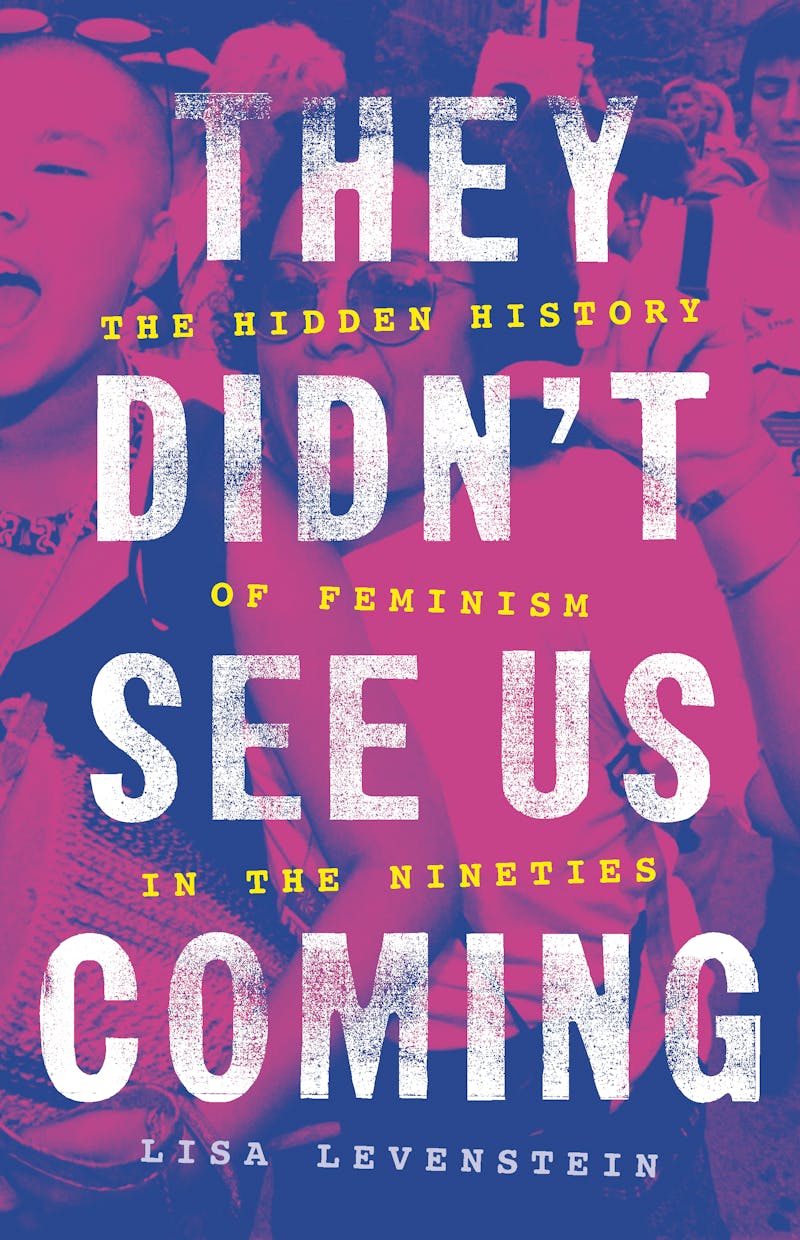We don’t tend to think of the 1990s as a high point for feminism. It was the decade of Jesse Helms and Jerry Falwell, of Operation Rescue and Focus on the Family, of super-skinny supermodels and highly publicized sexual misconduct in the White House. This period also saw welfare reform, the rollback of reproductive rights, and the entrenchment of the New Right in American politics—all things feminists tried and failed to stop. Susan Faludi has suggested these developments were part of a “backlash” against women: After women liberated themselves in the 1970s, the media and politicians conspired to convince them that the gains of feminism weren’t so great after all. It was a moment, Lisa Levenstein writes in her new book, They Didn’t See Us Coming, when feminism “became almost wholly invisible to the public.”

Levenstein wants to uncover a different story about the ’90s, one in which an “unsung movement” developed the techniques and laid the groundwork for much of today’s organizing, from the Women’s March to #MeToo. If feminists of this generation have been misunderstood, it may be in part because they expanded the scope of feminist activism: Drawing on the ideas and strategies of American women of color and activists from the global south, they saw that “every social justice issue was a feminist issue,” from environmentalism to reproductive justice, labor issues to human rights. Because they focused on problems that didn’t immediately appear to be “women’s issues,” some observers assumed that feminist activism had diminished.
Nor did they use familiar tactics. Popular accounts of feminism tend to highlight moments of militancy, such as the 1920s and the 1970s, and miss the work that goes on in periods of supposed dormancy. Whereas ’60s and ’70s feminists had rallied around domestic violence and abortion access in speak-outs and town halls, and had protested beauty standards at the Miss America pageant, the activism of the 1990s was less public-facing. These feminists did their work at conferences around the world or in digital spaces. They did grassroots organizing in their communities, engaged in microfinancing projects, and founded organizations that existed outside the feminist mainstream. As Levenstein notes, many of the “innovations” of 1990s feminists—professionalizing activism, drawing on available foundation money, and mobilizing online—are now staples of progressive movements. Despite receiving little publicity, feminism was active and vibrant throughout the 1990s.
Levenstein presents this recent feminist history as a success story, and there’s something to be said, intellectually and politically, for her focus on the positive. Too often, stories of social movements are stories of defeat, as writers and historians call attention to how activists faltered against overwhelming odds. Under these circumstances, the left can become “more attached to its impossibility than to its potential fruitfulness,” as the political theorist Wendy Brown has put it. To piece together the story of the ’90s feminists is to recognize just how influential they were. But it’s also to ask whether their influence was a wholly good thing. How much can advocacy and mobilization achieve for feminism? And what is lost when professionals lead a movement?
Levenstein first got the idea for her book from reading about the Fourth World Conference on Women in Beijing, which took place in 1995. This was the conference at which Hillary Clinton, then first lady, said publicly that “women’s rights are human rights”—a slogan she took from the group Gabriela, a coalition of Filipino women. Thirty thousand activists from around the world attended, including 8,000 from the United States. Marie Wilson, head of the Ms. Foundation and then seen as something like a successor to Gloria Steinem, had planned to use the conference events to position her organization as the feminist movement’s new institutional leader. Yet when the time came, she and other white American women found themselves stepping back, while American women of color and women from Asia and Latin America took center stage.